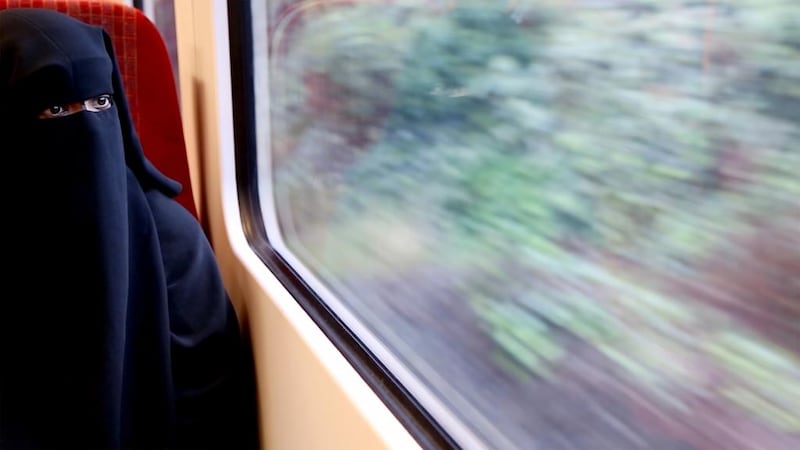Each of the women in I Wasn't Always Dressed Like This has had an individual journey to deciding to cover with either a hijab or niqab.
Take Louisa, the first woman we meet in the opening credits of the film. Louisa is 26 years old and originally from Lyon, France. She’s filmed walking to her university, wearing stylish, oversized sunglasses, a belted tunic and carrying her handbag in the crook of her elbow. Her headscarf is pretty, in blue and pink.
Louisa converted to Islam after visiting the Middle East and studying Islamic history at university. But, before that, her knowledge of Islam was limited. In the film, she says: “I thought: ‘OK, they fast, they pray and they wear a headscarf and their book has a lot of rules and regulations’.” It was only later, after a trip to Palestine, that she began to delve deeper and feel connected. “My time spent with Muslim women confirmed to me that Islam had a feminine side — although it’s not what I used to see from the outside. I felt they drew their strength from their spirituality.”
Louisa’s family did not expect her to embrace Islam, and worried, not only about her changing, but also about how she would be accepted in society in terms of finding work or getting married. “At first, it was very difficult for them to accept, but gradually their fear started to diminish.”
Now, Louisa is careful in her choice of hijab style, especially when she is in Europe. That is partly because of the preconceptions she herself had of Muslim women before she converted.
“I remember quite well how I used to perceive the hijab, and some styles look more strict or fear-inducing than others. So I prefer to have a more European-looking style. At the end of the day, it’s about finding a balance: being true to yourself without attracting too much unwanted attention.”
Sobia is the last woman to share her story. When she first appears on film in her niqab, the viewer sees her eyes reflected in a train window.
“I was interested in taking part in the film because I wanted to show a completely different side to the niqab away from the stereotypes — my story is not that common,” she says.
Sobia spent her teens listening to rock music and wearing skinny jeans. Eventually, she began to learn more about her religion and made a connection with women at her mosque. Her family were initially shocked by her choice to wear a niqab, but they eventually accepted it.
Sobia wears the niqab for both spiritual and feminist reasons. “I felt uncomfortable seeing men checking out women in public. It made me feel sick, because it was as if men were taking something away from women when they had no right to. Covering myself to this degree means the focus is on my speech. It is not my body that is at the forefront of discussion, but my words.”
She hopes that her role in the documentary will help foster understanding of Muslim women.
“I want people to know that the niqab is not a barrier — don’t be scared to talk to a woman in a niqab. Underneath it, we are people with experiences just like everyone else; we’ve had the same exposure to life as anyone else."










